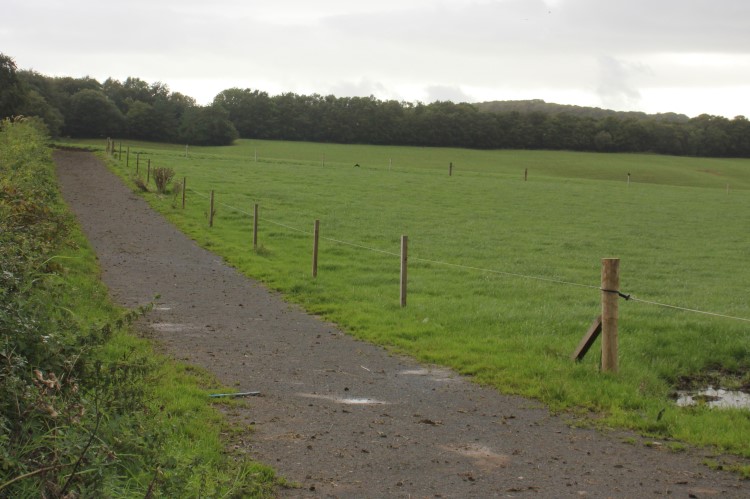Cow Tracks
Farm cow tracks can save a business hundreds of pounds per grazing season if constructed and set up efficiently at the start.
Effective cow tracks can lengthen the grazing season, through reduced damage to pasture and improved field access in poor weather. A well designed and positioned track will also improve cow flow, allowing cattle to walk comfortably and confidently over significant distances from paddock to the parlour, reducing the time spent moving the cattle, which would lead to reduced stress for both the cattle and the herdspersons.
Properly constructed cow tracks can also provide several health benefits to the herd. Lameness caused by claw horn lesions which develop as a result of injuries sustained moving across unsuitable ground, can be reduced by a properly constructed cow track. As well as this, cow tracks also improve udder hygiene, potentially reducing levels of mastitis in the herd.
Managing runoff
Under the General Binding Rules, no run-off from a cow track is allowed to enter the water environment and the track design should ensure that any drainage is shed into a field or directed to a swale for treatment. If a cow track is to be constructed within 10m of, or to cross a watercourse, advice and guidance should be sought from SEPA prior to starting work. Pipe culverts and wooden bridges may need to be added to the track to prevent any contamination from the track, and authorisation from SEPA may be required to permit installations along the riverbank.
Legalities to consider
Cow tracks are considered a private way, which means they fall under Permitted Development Rights as listed in Class 18 of the Town and Country Planning (General Permitted Development)(Scotland) Order 1992 (as amended) legislation.
Before beginning construction of any cow track within the farm, it is important to notify your local planning authority with a written description of the planned construction, including a plan to show the route(s) of the tracks and details of the materials to be used. There is no cost associated with this process and the Planning Authority should respond within 28 days to inform whether the construction can proceed, or if more information, or indeed planning permission is required.
Cow Track Finishing Material
Finishing materials for cow tracks vary in type and costs. Commonly used materials include whin dust, reclaimed astroturf, woodchip, crushed rubble and concrete. The costs for each will vary, but the maintenance costs should be taken into consideration at the time of construction e.g. concrete might be the most expensive option but will require less maintenance when compared to finishing with whin dust, which can erode in bad weather and may need to be topped up annually. There is more information about the different material options in Technical Note TN730.

Useful Resources
- Technical Note (TN730) - Construction of a Cow Track for Access to Grazing.
- AHDB – Health Feet
- Rural Payments and Services
- Farming & Water Scotland – Know the rules
Managing Lameness
Well designed and constructed cow tracks will allow cattle enough room to walk with their heads down, picking where they place their hooves to prevent injury. The finishing material for the track surface should not contain grit (such as tar planings) or large stones which can cause sole bruising or get trapped in between hoof claws. Providing and maintaining a comfortable track for cattle to walk on can reduce the likelihood of lameness. Lame dairy cows are more likely to pick up any stones which have been brought onto the cow track and cause further damage to the feet.
Keeping on top of cow foot health is important to ensure the dairy herd remains productive. By incorporating regular foot trimming, treating with Non-Steroidal Anti-inflammatory Drugs (NSAIDs) and regular and reflective mobility scoring, lameness of the herd can be monitored and improved.
Find out more:
AHDB: Lameness control in dairy cows
Sign up to the FAS newsletter
Receive updates on news, events and publications from Scotland’s Farm Advisory Service
